Last Updated on August 22, 2023 by Michelle
I’ve been fermenting for a while, but this one is a new one to me that I’m super excited about: I’m fermenting peppers this week!
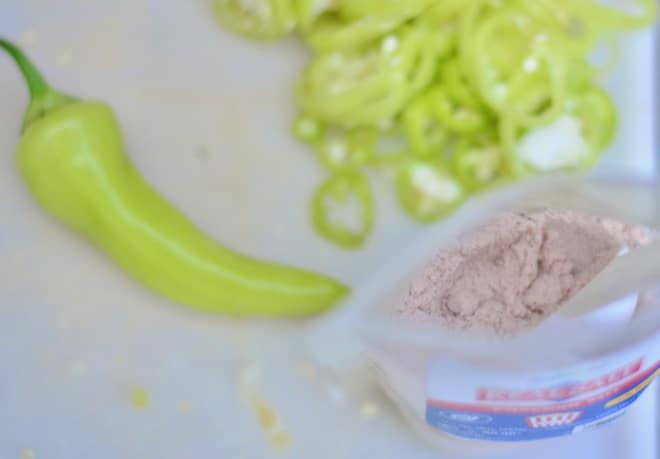
Which peppers are good for fermenting?
I’m using Banana Sweet Peppers this week, but truly any pepper can be fermented. The sky–and your taste buds–are the limit.
I choose this pepper for a few reasons.
- It’s a pleasing, subtle pepper taste before fermenting, so after fermenting the taste is amped to just the right punch.
- I love growing these peppers. The New England growing season is just not long enough for a typical pepper to prosper here. At least in my experience. I have tried every single summer in the 6 summers we have lived on our New England homestead to grow peppers. I have failed every single year. Until now. Until I discovered these amazing, wonderfully producing, delicious peppers.
- These peppers are easy to grow, and they’re prolific once they get started, with just 6 small plants providing way more peppers than we could ever eat fresh. So fermenting is the most logical choice for me.
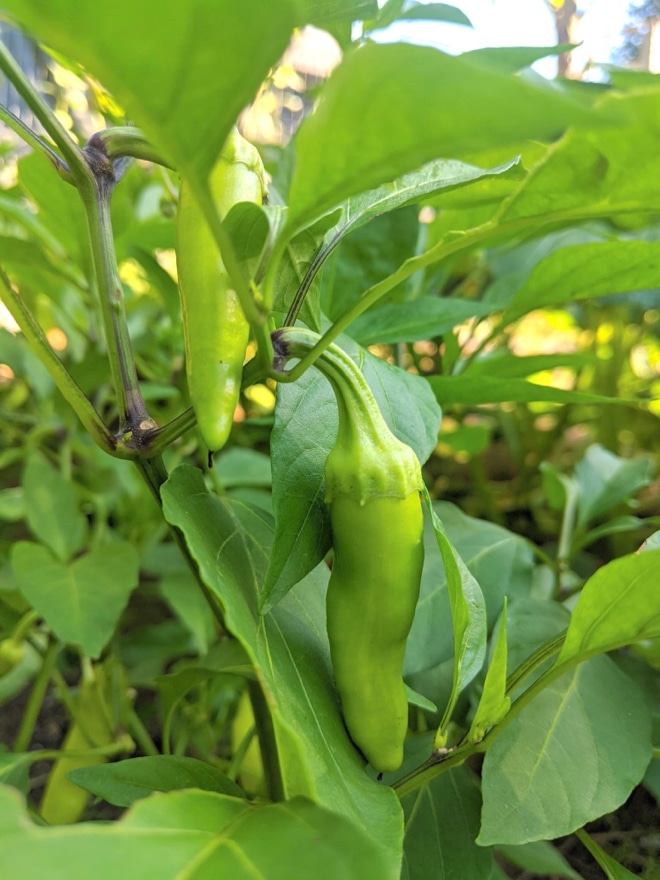
How can you use fermented peppers?
Again, the sky–and your taste buds–are the limit to how you can use your fermented peppers. Here are just a few ideas:
- On a tossed salad
- In any chicken meal (our family favorite is Kung Pao with fermented peppers)
- Added to fresh salsa
- In canned salsa, for a fermented “kick”
- Added into a bean salad
- Grilled with onions and sausage for a delicious sandwich
- In a taco salad
Why eat fermented foods?
Why did I add fermenting to our family diet? As my momma would’ve said, I could talk your ear off on this topic. In fact, I have a whole module on this topic in my Simple DIY Kombucha Master Class.
Suffice it to say, we do so many things today in our modern culture that is destroying our gut health. Fermented foods add the good stuff back to our guts. Deliciously.
Well, except for sauerkraut. Sorry if you’re a fan, but I can’t stand that stuff.
But fermented pickles, fermented cauliflower, fermented cherry tomatoes, fermented blueberries, and fermented peppers? Give me more please!
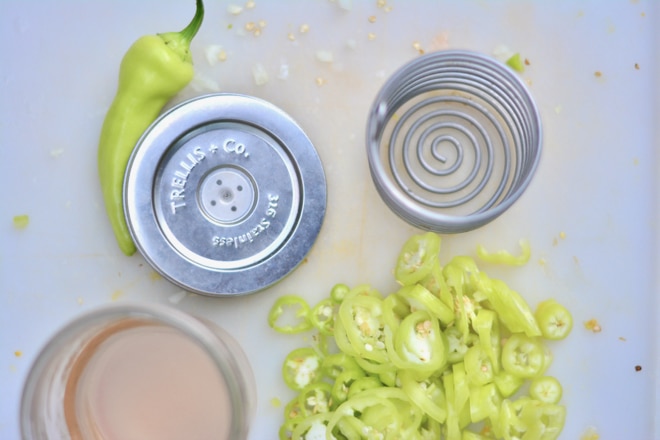
Fermenting Peppers
The process to fermenting is truly super easy. The hard part? Waiting. 5-7 days.
Ingredients
- 4 cups filtered water
- 1 TB fine salt (this is the best)
- 2 peeled garlic cloves
- Two large handfuls of Banana Sweet Peppers
Directions
- Sanitize your jar.
- Prepare your brine by dissolving the tablespoon of Redmond salt into the 4 cups of water and set aside.
- Slice your clean peppers.
- Fill your clean jar with peppers. It’s totally fine if you don’t have enough peppers to fill your jar, as long as you have enough brine to cover your peppers.
- Pour brine over the peppers.
- Insert a weight to ensure that your peppers stay below your brine at all times. I use these fermenting springs, which work wonderfully whether I just have a few peppers to ferment or a stuffed-full jar of peppers.
- Cover jar with a breathable fabric or (my preference) these breathable, stainless steel lids.
- Place jar in a bowl if you want to avoid any possible mess if your ferment overflows in the days ahead.
- Place jar in a corner of the kitchen and wait patiently (truly the hardest part).
- Taste your peppers after 4-5 days and every day thereafter until they are the taste you’re looking for.
- Remove fermenting springs and lid, place a regular lid on the jar, and store your fermented peppers (in the brine) in the fridge for many months.
Ways to alter this recipe
Feel free to alter how you season your fermented peppers. In place of garlic, your choices could include cumin, sliced onion, cilantro, or parsley.
Also feel free to chop the peppers into any size you would like. Or ferment whole peppers.
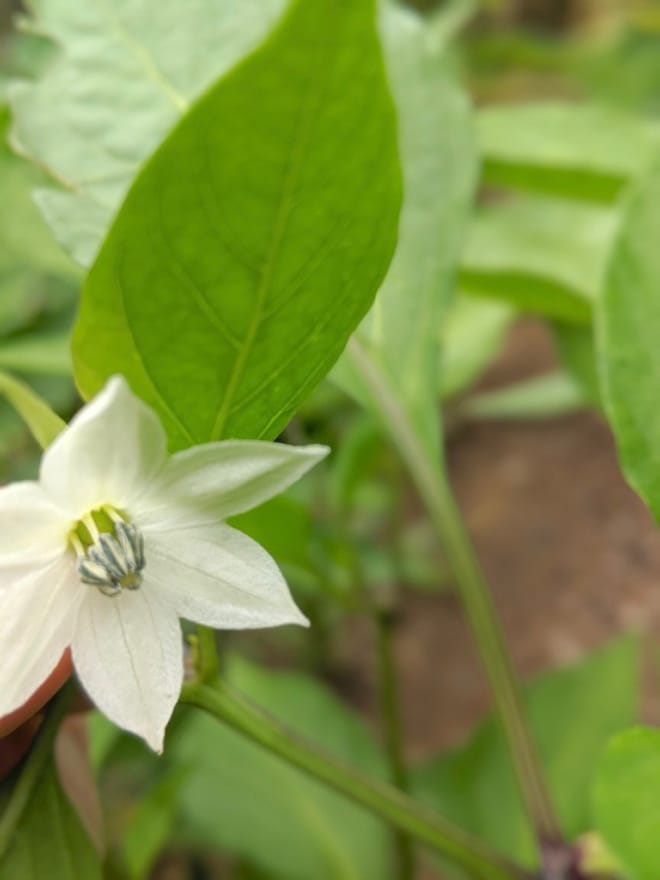
Even the blooms of the Banana Sweet Pepper are gorgeous in my garden.
One way to NOT alter this recipe
Keep in mind that this brine recipe calls for fine salt. Coarse salt is much different, size wise, so you would need to use a differing amount. I only use this salt, so I would recommend you do some research if you plan on using any other kind.
Stick with NON iodized salt. Iodized salt gives ferments a funky color and possibly a funky taste. More importantly, studies show that iodine may negatively affect the fermentation of foods.
One Way to Save Money!
Stock up on my favorite salt on the planet and save 15% with code SOULYRESTED. Go here to see all my favorite Redmond Real Salt products in my pantry.
More fermenting & preserving goodness:
How to ferment tea and make carbonated drink to replace soda.
How to can crisp dill pickles.
How to make (delicious!) fermented sourdough bread.
“
When you have eaten your fill, be sure to praise the Lord your God for the good land he has given you.” Duet. 8:10
Pin this for later!
Click on the image below to pin this post.
Find out why SoulyRested was considered to be one of the Top 20 Must-Read Homesteading Blogs of 2018 and then one of the Top Homesteading Blogs of 2019 as well.
Glance at my Resource Page if you’d like to get a glimpse of all the supplies I use and recommend for everything from gardening, to homeschooling, to chicken care, to nature journaling, to maple syrup making.
I’d love to connect!
To find me in some other neck of the woods, just click any (or every!) icon below:

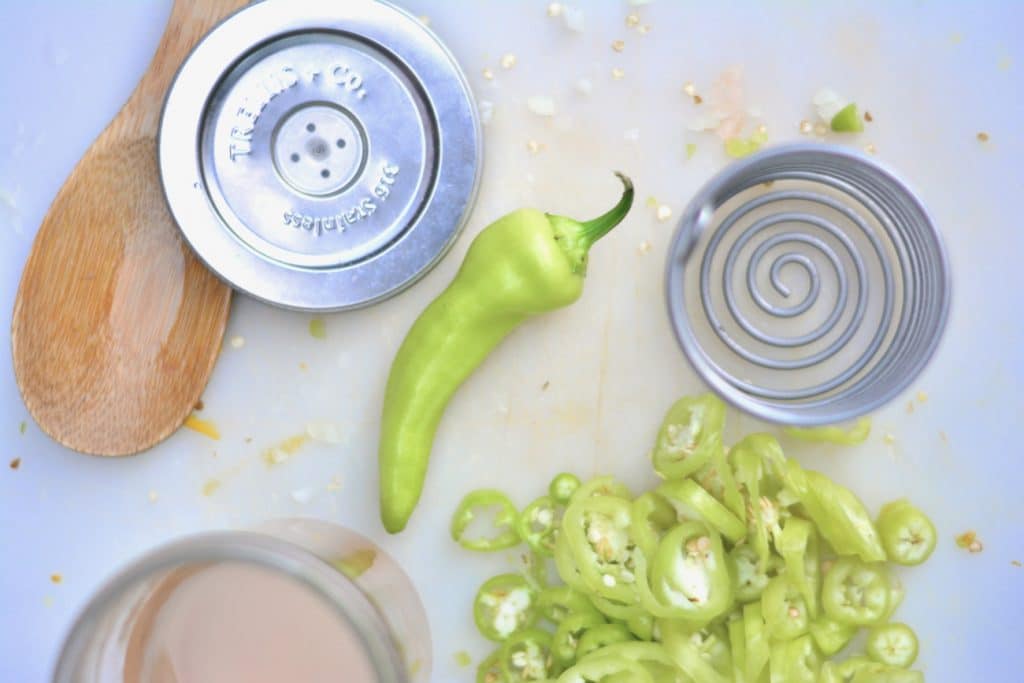
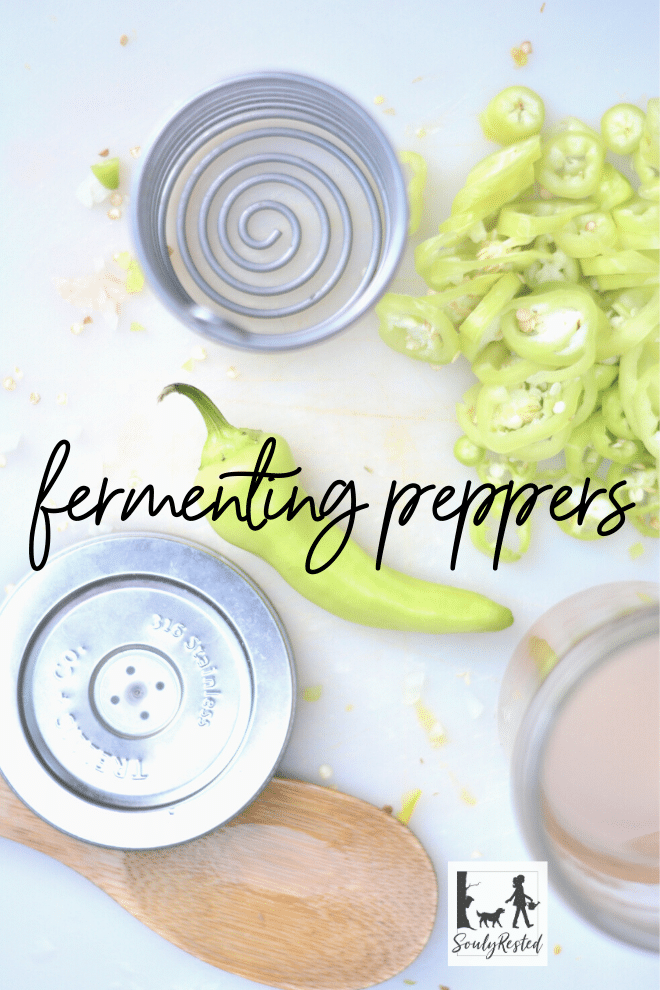





This looks very interesting to me. I was wondering if it might be like pepperoncini’s? My husband loves those and it would be super cool to be able to make them for him.